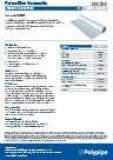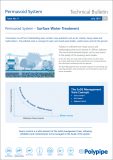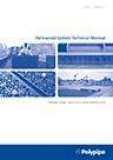 pdf (227.1 KB)
pdf (227.1 KB)
 pdf (227.1 KB)
pdf (227.1 KB)
 pdf (2.92 MB)
pdf (2.92 MB)
Permavoid Technical Bulletin Issue 4 -...
 pdf (7.13 MB)
pdf (7.13 MB)
Permafilter Geotextile is a non-woven, dimpled, needle-punched geotextile membrane that has been specifically designed for hydrocarbon pollution treatment in sustainable drainage systems (SuDS) and other civil engineering applications.
Permafilter Geotextile is suitable for use in a range of applications including residential, industrial estates, swales, sports pitches, car parks, roofs, basements, pedestrian areas and rainwater harvesting.
The dimpled geotextile membrane comprises of a proprietary blend of polyester fibres with hydrophilic (water-attracting and oil repellent) and hydrophobic (oil attracting and water repellent) properties to achieve superior oil retention. Permafilter Geotextile is capable of retaining a range of oil contamination types, from daily car drip losses to catastrophic spillages such as car oil-slump failures. The entrapped hydrocarbons are biodegraded by naturally occurring microorganisms, providing a self-cleaning mechanism. Permafilter is capable of retaining 6l of oil per 10m².
Permafilter should be laid to suit site-specific requirements. Overlaps should be a minimum of 300mm or heat sealed. Ensure that the geotextile membrane is clean and debris free before installing Permavoid.

 pdf (227.1 KB)
pdf (227.1 KB)
 pdf (2.92 MB)
pdf (2.92 MB)
 pdf (7.13 MB)
pdf (7.13 MB)

Working closely with construction company, The Carey Group Plc, and international consultancy and construction company Mace, Polypipe’s supply and install partner, SEL,...
View Case Study >